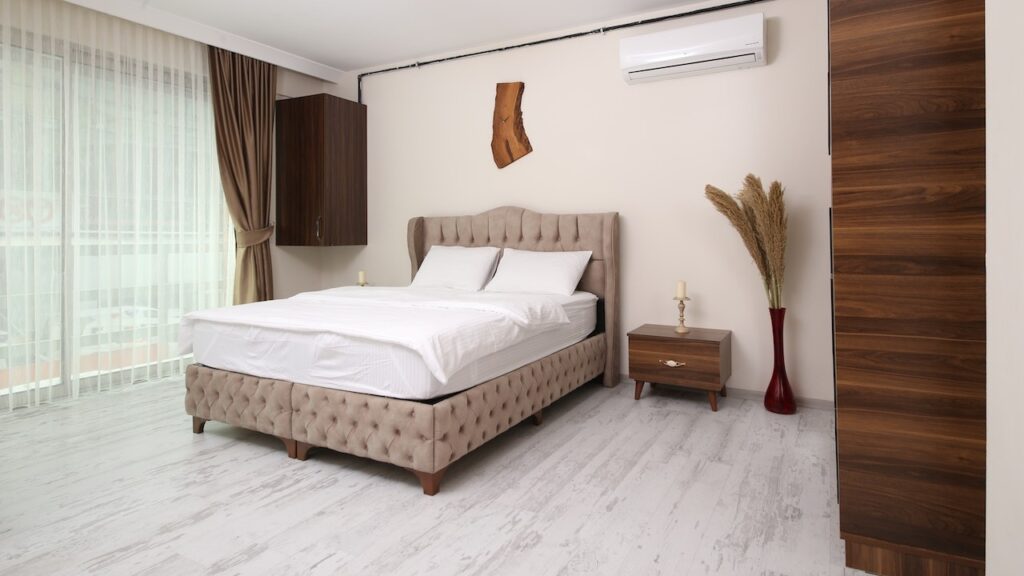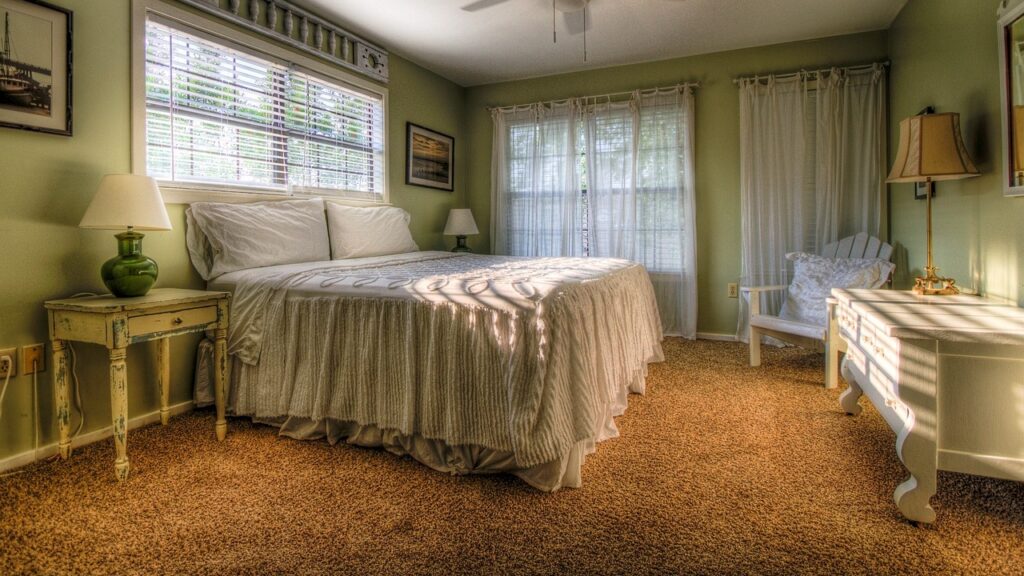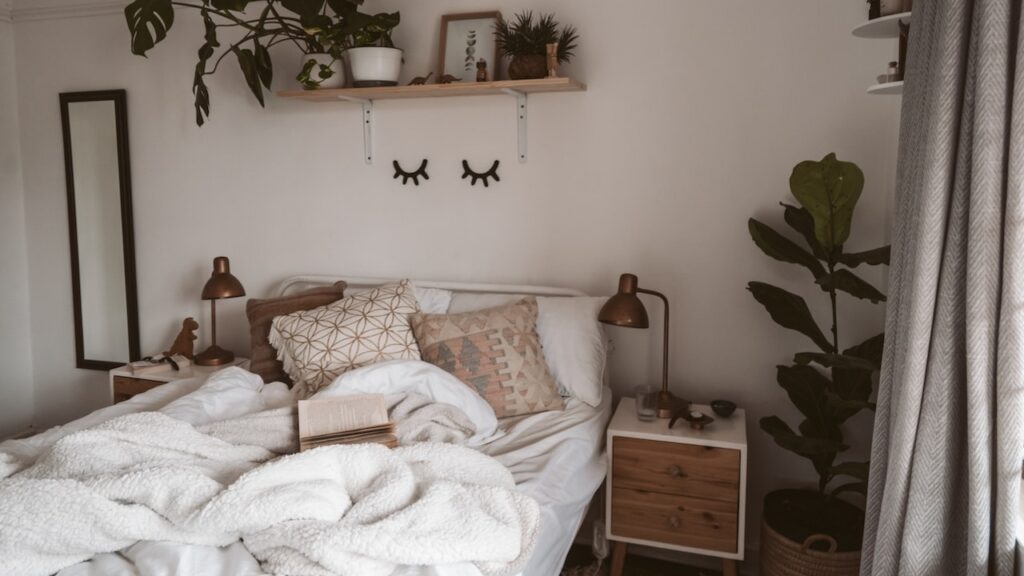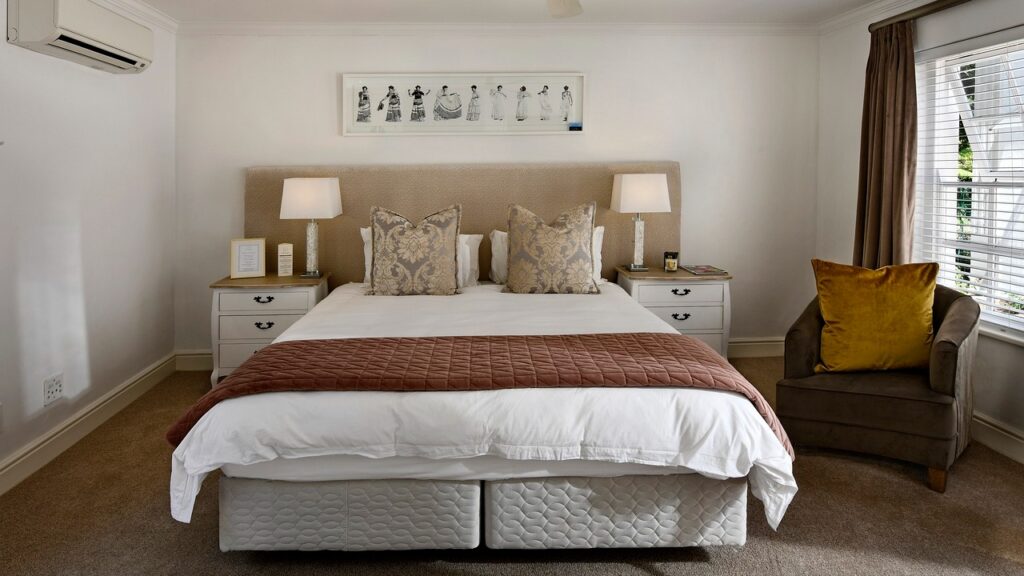The height of a bedside table is a crucial aspect of bedroom furniture design, as it directly impacts the functionality, aesthetics, and overall comfort of your bedroom space. Choosing the right bedside table height is essential to ensure that it complements your bed, suits your personal preferences, and accommodates your specific needs.
In this comprehensive guide, we will explore various factors that influence bedside table height, the recommended height range for different scenarios, and tips for making the best choice for your bedroom.
1. Bed Height:
The height of your bed is a primary consideration. The ideal bedside table height should align with the top of your mattress or be slightly lower. This ensures easy access to items placed on the table while you’re sitting or lying in bed.
2. Mattress Thickness:
The thickness of your mattress can impact the overall height of your bed. If you have a particularly thick mattress, you may need a slightly taller bedside table to maintain the desired alignment with the mattress surface.
3. Bedroom Size:
The size of your bedroom also plays a role in your bedside table choice. In smaller bedrooms, you may opt for a lower-profile table to avoid crowding the space. In larger bedrooms, you have more flexibility in selecting taller tables if they suit your design preferences.
4. Bedroom Style:
The style and decor of your bedroom can influence the choice of bedside table height. Different styles, such as contemporary, traditional, or minimalist, may favor specific table heights to achieve a cohesive look.
5. Personal Comfort:
Your personal comfort and ergonomic needs should guide your decision. Ensure that the bedside table height allows you to reach items comfortably without straining or overreaching.
6. Bedside Table Functionality:
Consider how you plan to use your bedside table. If it’s primarily for holding a lamp, alarm clock, or a book, the height requirements may differ from a table intended for additional storage or workspace.
Recommended Bedside Table Height Ranges
The ideal height for a bedside table can vary based on different scenarios and personal preferences. Here are some recommended bedside table height ranges for various situations:
1. Standard Height (Approximately 24-28 inches):

Standard-height bedside tables are the most common choice. They work well with traditional bed heights and ensure that items on the table are easily accessible when you’re sitting or lying in bed. This height range is typically ideal for standard bed frames and mattresses.
2. Low Height (Approximately 16-24 inches):

Lower-profile bedside tables can create a minimalist and spacious look in smaller bedrooms. They work best with platform beds or beds with lower profiles. However, they may require bending or reaching down when accessing items, which may not be suitable for everyone.
3. Tall Height (Approximately 28-30 inches or more):

Taller bedside tables provide additional storage space and can work well with taller or thicker mattresses. They can also create a sense of balance in rooms with high ceilings. However, they may not be suitable for shorter individuals or beds with lower profiles.
4. Adjustable Height:
Some modern bedside tables come with adjustable features, allowing you to customize the height to your preference. This versatility can be particularly useful if you have multiple beds with different heights in your home.
5. Matching Bedside Table and Bed Height:
To create a cohesive and balanced look in your bedroom, you can choose a bedside table that matches the height of your bed or aligns closely with it. For example, if you have a platform bed with a lower profile, opt for a lower bedside table that complements the bed’s design.
Bedside Table Height by Bed Type
Different bed types may require specific considerations when determining the ideal bedside table height:
1. Standard Bed:
For a typical bed with a mattress and box spring, a standard bedside table height of approximately 24-28 inches is usually suitable. This height aligns with the mattress surface and ensures easy access to items from a seated or lying position.
2. Platform Bed:
Platform beds often have lower profiles than standard beds. For these beds, you may prefer a lower-profile bedside table (16-24 inches) to maintain a balanced look and ensure accessibility.
3. Adjustable Bed:
If you have an adjustable bed that allows you to elevate the head or foot of the mattress, consider a bedside table with adjustable height options. This ensures that the table remains functional regardless of the bed’s position.
4. Daybed:
Daybeds typically have a lower height than standard beds. A lower bedside table can complement the daybed’s design and provide convenient storage.
5. Bunk Bed:
Bunk beds are often used in children’s rooms or guest rooms with limited space. For the upper bunk, consider wall-mounted shelves or small wall-mounted bedside tables. For the lower bunk, choose a bedside table height that aligns with the mattress.
Bedside Table Height by Bedroom Size
The size of your bedroom can influence your choice of bedside table height:
1. Small Bedroom:

In a small bedroom, space optimization is crucial. Opt for a lower-profile bedside table to prevent overcrowding and create a more open and airy feel. A height of 16-24 inches is typically appropriate.
2. Medium Bedroom:

In a medium-sized bedroom, you have more flexibility in choosing the bedside table height. A standard height (24-28 inches) is often suitable, but you can adjust it based on your design preferences.
3. Large Bedroom:

In a spacious bedroom, you can choose bedside tables that complement the room’s scale. Taller tables (28 inches or more) can add a sense of grandeur, while standard heights maintain a balanced look.
Bedside Table Height and Style
Consider your preferred bedroom style and decor when selecting the height of your bedside table:
1. Contemporary or Minimalist Style:
These styles often favor lower-profile furniture to create a clean and streamlined look. Opt for bedside tables with a height range of 16-24 inches to maintain the minimalist aesthetic.
2. Traditional Style:
Traditional bedrooms may feature standard-height bedside tables (24-28 inches) to align with the classic aesthetics and proportions of traditional furniture.
3. Transitional Style:
Transitional bedrooms combine elements of both contemporary and traditional styles. You can choose a bedside table height that suits your transitional decor, but standard heights are typically a safe choice.
4. Rustic or Farmhouse Style:
These styles often incorporate various furniture heights for a more eclectic and charming look. You can mix and match bedside table heights to achieve this effect.
5. Industrial Style:
Industrial-style bedrooms may feature a mix of standard and taller bedside tables to complement the rugged and utilitarian design elements associated with industrial decor.
Personal Preferences and Comfort
Ultimately, your comfort and personal preferences should guide your choice of bedside table height:
- Your Height: Consider your own height and reach when determining the ideal bedside table height. The table should allow you to comfortably access items without straining or overreaching.
- Mobility: If you have mobility limitations or specific accessibility requirements, prioritize a bedside table height that accommodates your needs.
- Activities: Think about how you plan to use your bedside table. If you frequently use it for activities like reading or working on a laptop, ensure that the table height promotes comfortable posture and ergonomics.
Bedside Table Functionality
The intended use of your bedside table can also impact the ideal height:
- Basic Functionality: If your bedside table primarily serves as a surface for essentials like a lamp, alarm clock, and a glass of water, a standard height (24-28 inches) should suffice. This height range ensures easy access to these items from a seated or lying position.
- Storage: If you require additional storage for books, electronics, or personal items, consider a bedside table with drawers or shelves. Ensure that the table’s height allows for easy access to the storage compartments, and that the overall design aligns with your storage needs.
- Workspace: If you plan to use your bedside table as a workspace for tasks such as reading, writing, or using a laptop, choose a table height that promotes ergonomic comfort. A slightly lower table may be more comfortable for reading, while a standard height is suitable for a laptop workstation.
Choosing the Right Bedside Table Height
To select the ideal bedside table height for your bedroom, follow these steps:
1. Measure Your Bed:
Measure the height of your bed, including the mattress and any additional layers like a box spring or platform.
2. Consider Your Mattress Thickness:
If your mattress is exceptionally thick, factor in its thickness when determining the desired bedside table height. The goal is to ensure that the table is level with the top of the mattress or slightly below it.
3. Assess Your Bedroom Size:
Take into account the size of your bedroom and how much space you have around the bed. Ensure that the bedside table height complements the room’s proportions and doesn’t make the space feel cramped.
4. Determine Your Style:
Consider the style and decor of your bedroom. Choose a bedside table height that aligns with the design aesthetic you wish to achieve.
5. Think About Functionality:
Evaluate how you plan to use the bedside table. If you require storage or workspace functionality, select a table height that accommodates those needs.
6. Prioritize Comfort:
Ensure that the chosen bedside table height allows for comfortable access to items and promotes good ergonomic posture, especially if you use the table for reading or other activities.
7. Test It Out:
If possible, visit furniture showrooms or stores to physically test different bedside table heights. This can help you determine what feels most comfortable and functional for your specific requirements.
conclusion
In conclusion, the height of your bedside table is a key consideration when designing your bedroom. It should align with the height of your bed, accommodate your personal preferences, and meet your functional needs. By taking into account factors such as bed type, mattress thickness, bedroom size, style, and personal comfort, you can confidently choose the right bedside table height to enhance your bedroom’s overall functionality and aesthetics. Ultimately, the perfect bedside table height is the one that complements your unique space and lifestyle.


